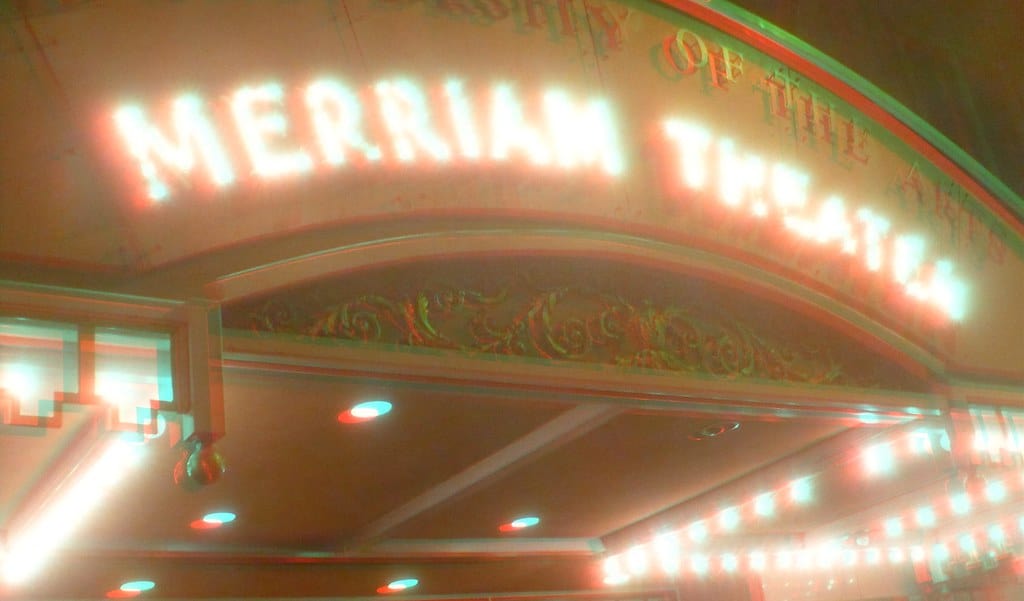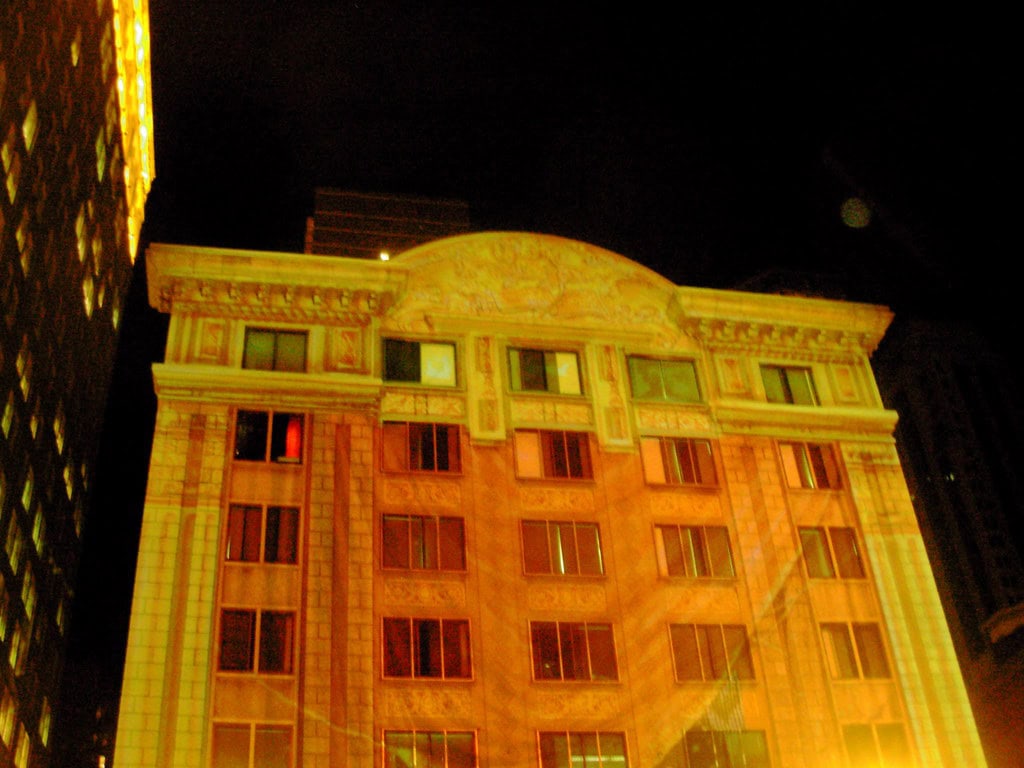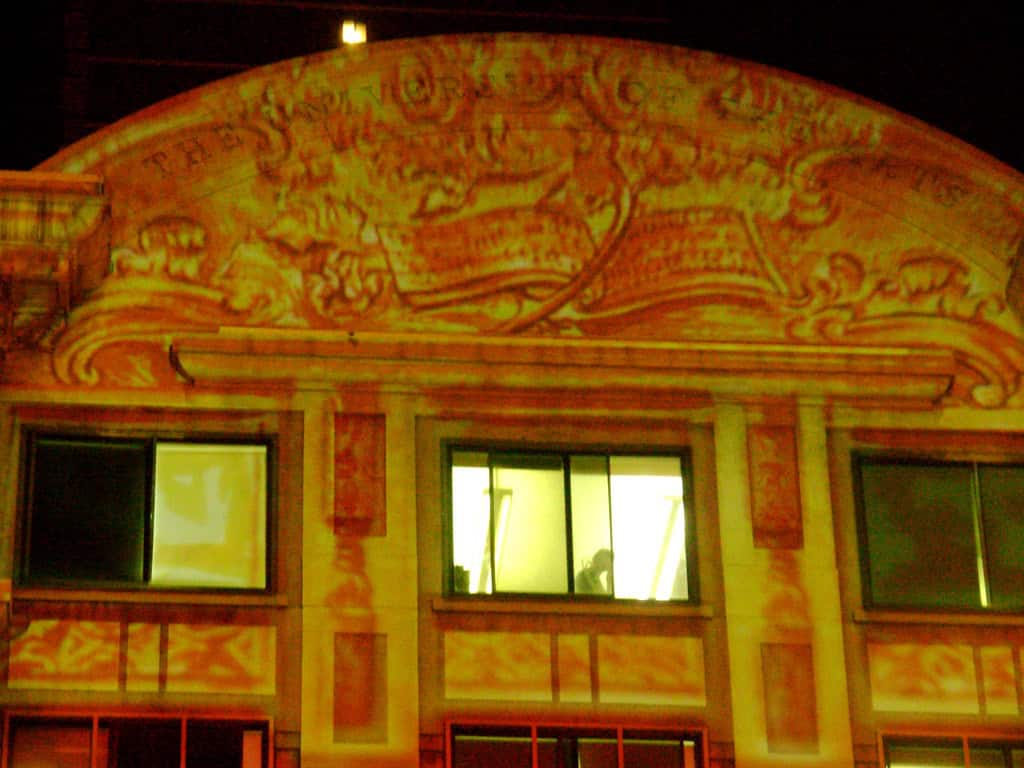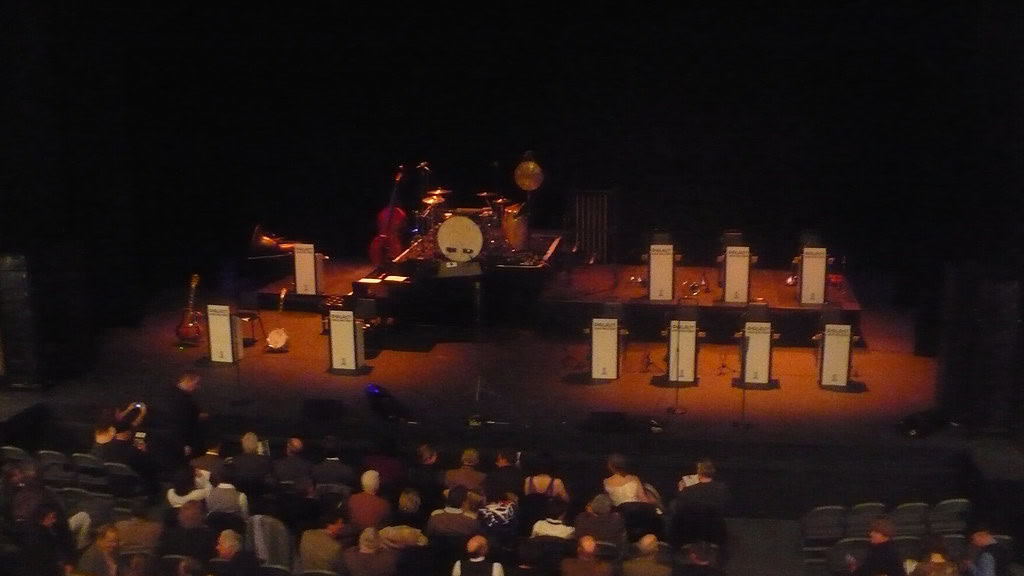On March 13, 1876, the citizens of Waterbury, Connecticut experienced one of the most dramatic geological catastrophes in American urban history. The Merriam Opera House, a grand three-story entertainment venue that stood as a cultural centerpiece of the growing industrial town, simply vanished into the earth. In a matter of minutes, the entire structure—along with its ornate interior, stage equipment, and furnishings—disappeared into a suddenly formed sinkhole, creating a spectacle that would be remembered for generations. Thankfully, the disaster occurred in the early morning hours when the building stood empty, preventing what could have been a devastating loss of life. The incident remains one of the most dramatic examples of urban sinkholes in American history and stands as a cautionary tale about the hidden geological dangers that can lurk beneath seemingly stable ground.
The Merriam Opera House: A Cultural Jewel

Before its dramatic destruction, the Merriam Opera House represented the cultural aspirations of a growing industrial center. Built in 1869 by local businessman and arts patron Charles Merriam, the opera house was designed in the ornate Italianate style popular during the post-Civil War period. The theater seated approximately 800 patrons and featured an impressive stage, elaborate ceiling murals, and plush red velvet seating.
It had quickly become a focal point for Waterbury’s social life, hosting traveling theatrical productions, opera companies, musical performances, and community events. In a time before cinema and radio, the opera house represented the height of cultural entertainment, drawing visitors from throughout the region. The building’s three stories also housed several businesses on its ground floor, including a restaurant and shops that catered to theatergoers, making it an important commercial hub as well as a cultural landmark.
Geological Foundations: The Hidden Danger Below

What the builders of the Merriam Opera House couldn’t have fully understood was the treacherous nature of the ground beneath their impressive structure. Waterbury sits in a valley surrounded by hills, with numerous underground streams and water passages cutting through the limestone bedrock of the region. This geological formation is particularly susceptible to karst processes—the dissolution of soluble rocks like limestone by water, creating underground cavities, caves, and channels.
For years before the collapse, underground water had been steadily dissolving the limestone beneath the opera house, creating an ever-expanding cavity. Construction in the area likely exacerbated the natural process, with changes to water drainage patterns and the added weight of buildings increasing pressure on these underground formations. The vibrations from the railroad lines that had been built nearby in the 1870s may have also contributed to destabilizing the already compromised ground beneath the theater.
The Fateful Morning: Eyewitness Accounts

According to historical accounts, the collapse began shortly after 4:30 AM on that March morning. William Parker, a night watchman making his rounds, reported hearing a low rumbling sound like “distant thunder” as he walked past the opera house. Within moments, that rumble transformed into a roar as the ground beneath the structure gave way. Parker described watching in horror as “the entire building seemed to shudder, then drop straight down as if swallowed by some giant mouth.”
Several other early-rising witnesses, including baker Thomas Halloran who was preparing bread in a nearby establishment, corroborated this account. Halloran described how “the ground shook, and dust rose up like smoke” as the building disappeared. By the time the sun rose over Waterbury, nothing remained of the grand theater but a gaping hole approximately 90 feet across and 65 feet deep. The entirety of the collapse took less than five minutes according to consistent reports, making it one of the most rapid structural failures recorded in the era.
Narrow Escape: The Lucky Timing

The timing of the collapse proved to be providential in preventing what could have been a tremendous loss of life. Just twelve hours earlier, the opera house had hosted a performance of “The Count of Monte Cristo” by a traveling theater company, with nearly 600 patrons in attendance. Had the collapse occurred during the performance, hundreds might have perished in what would have been one of the deadliest structural failures in American history.
Adding to the stroke of luck, a scheduled early morning rehearsal for a local amateur theatrical society had been canceled the previous evening due to the illness of the director. The dozen or so society members who would have been present at 5:00 AM were spared by this fortunate coincidence. The only reported casualty was the opera house’s resident cat, though local legend maintains that the feline was later discovered alive in a neighboring building, having apparently sensed the impending disaster and fled.
Immediate Aftermath and Rescue Efforts

News of the collapse spread rapidly through Waterbury, drawing hundreds of stunned onlookers to the scene. Local authorities established a perimeter around the massive sinkhole as concerns grew about potential further collapses affecting adjacent buildings. The Waterbury Fire Department led initial rescue efforts, though it quickly became apparent that there was no one to rescue. Instead, their focus shifted to ensuring the stability of surrounding structures and preventing curious citizens from venturing too close to the unstable edge of the newly formed pit.
Engineers and geologists from New Haven and Hartford arrived by midday to assess the situation, determining that the sinkhole had likely stabilized but recommending the evacuation of several neighboring buildings as a precaution. The local newspaper, The Waterbury American, printed a special afternoon edition documenting the disaster with hand-drawn illustrations of the scene, as photography was still in its infancy and could not yet capture such dramatic events with the necessary speed.
Scientific Understanding: 19th-Century Explanations

The sudden disappearance of a major building naturally prompted intense scientific interest in an era when geology was still developing as a formal discipline. Professor James Dwight Dana of Yale University, one of America’s foremost geologists of the period, traveled to Waterbury to investigate the phenomenon. His assessment, published in the American Journal of Science, provided one of the first detailed scientific explanations of urban sinkholes in American literature. Dana described the collapse as “a natural consequence of subterranean erosion in carbonate rock formations, accelerated by human interference with natural drainage patterns.”
Some local citizens, less scientifically inclined, proposed supernatural explanations or Divine punishment, theories that Dana diplomatically dismissed in his writings. The Waterbury incident became a case study in geological textbooks for decades afterward, helping to advance understanding of karst topography and the risks it posed to urban development. Dana’s investigation also highlighted the importance of geological surveys before major construction projects, a practice that was far from standard in the 19th century.
Economic Impact on the Growing Town

Beyond the immediate physical destruction, the sinkhole dealt a significant economic blow to Waterbury. The opera house had been one of the town’s most valuable commercial properties, representing an investment of approximately $75,000 (equivalent to over $1.8 million today). Its loss affected not just owner Charles Merriam but also the various businesses that had occupied ground-floor spaces in the building. The disaster also temporarily damaged Waterbury’s reputation as a safe place for investment at a crucial time in the city’s industrial development.
Several planned commercial buildings were put on hold as investors waited to ensure that the ground beneath Waterbury was indeed stable. Property values in the downtown area declined by nearly 15% in the months following the collapse, according to records from the town assessor’s office. The traveling theatrical company that had performed the previous evening also suffered severe losses, as their elaborate costumes, props, and sets had been stored in the theater overnight and vanished with the building—a financial blow from which the small company never recovered, forcing its dissolution later that year.
Engineering Solutions: Filling the Void

The gaping hole in the center of Waterbury presented both a practical problem and an engineering challenge. After extensive ground studies confirmed that the immediate danger of further collapse had passed, city officials faced the question of how to reclaim the space. The solution came in the form of an ambitious fill project that began in May 1876. Over the course of three months, more than 12,000 cubic yards of gravel, stone, and compacted soil were transported to the site and methodically deposited in the sinkhole.
Engineers from the nearby brass factories designed a system of compaction using steam-powered equipment to ensure the new fill would provide a stable foundation. The project represented one of the earliest large-scale urban soil stabilization efforts in American civil engineering. To prevent future issues, drainage systems were installed to divert underground water away from the filled area. The project cost approximately $18,000, raised through a combination of municipal bonds and donations from local industrialists who recognized the importance of restoring confidence in Waterbury’s infrastructure.
The Site Today: Remembering the Disaster

Visitors to modern-day Waterbury would find no physical evidence of the dramatic events of 1876. The site where the Merriam Opera House once stood was eventually redeveloped, and today hosts a nondescript commercial building constructed in the early 20th century. A small bronze plaque installed during Waterbury’s bicentennial in 1974 offers the only on-site acknowledgment of the historic sinkhole disaster.
The plaque, easily missed by passersby, reads simply: “Site of the Merriam Opera House, which stood from 1869 until March 13, 1876, when it vanished into a sinkhole. A reminder of the forces of nature that shape our world.” The Mattatuck Museum in downtown Waterbury maintains a more substantial exhibit about the incident, featuring salvaged artifacts, historical newspaper accounts, and a scale model showing how the building disappeared. Engineers still occasionally reference the site when conducting geological surveys in the city, as the area remains part of Waterbury’s limestone karst system, though modern drainage and construction techniques have largely mitigated risks of similar occurrences.
Similar Sinkholes Throughout History

While dramatic, the Merriam Opera House disaster was neither the first nor the last example of sudden urban sinkholes. Historical records document numerous instances of ground collapses in cities built on karst topography. The ancient city of Hierapolis in Turkey experienced several building losses due to sinkholes in Roman times. More recent examples include the 1981 Winter Park sinkhole in Florida that swallowed several businesses and a municipal swimming pool, and the 2010 Guatemala City sinkhole that created a perfectly circular pit 60 feet wide and 300 feet deep.
What makes the Waterbury incident particularly notable was its occurrence in New England, a region not typically associated with major sinkhole activity compared to more sinkhole-prone states like Florida, Texas, Alabama, Missouri, Kentucky, and Pennsylvania. Geologists now understand that while New England has fewer sinkholes than these regions, its scattered limestone deposits can create localized karst features that pose similar risks. The Merriam Opera House collapse remains unique for the completeness with which a large, substantial building disappeared in such a short time frame.
Cultural Impact and Artistic Responses

The dramatic nature of the opera house’s disappearance inevitably captured public imagination far beyond Waterbury. Newspapers across the country carried the story, often with embellished accounts that exaggerated the size of the sinkhole or invented fictional victims. The incident inspired several works of popular culture, including a melodramatic stage play titled “Swallowed Up!” that toured New England in 1877-1878. The famous American author Mark Twain, who lived in nearby Hartford, reportedly visited the site and referenced the incident in correspondence, though he never incorporated it directly into his published works.
Several folk songs emerged about the disaster, including “The Ballad of Merriam’s Folly” which remained in local oral tradition well into the 20th century. Perhaps most interestingly, the incident contributed to a short-lived literary trend of “sinkhole stories” in the popular periodicals of the late 1870s, sensational tales in which characters and buildings would disappear into sudden ground collapses—a reflection of Victorian anxieties about the instability lurking beneath the surface of seemingly secure modern life.
Lessons Learned: The Legacy of the Merriam Opera House Disaster

The Merriam Opera House disaster stands today as more than a curious historical footnote. It represents a significant early case study in urban geological hazards and continues to offer relevant lessons about construction in karst environments. The collapse directly influenced the development of building codes in Connecticut, with Waterbury becoming one of the first municipalities to require geological assessments before large construction projects. Modern engineers studying sinkhole-prone areas still reference the incident as an example of how quickly seemingly solid ground can fail without warning.
The disaster also changed how water management was approached in urban planning, highlighting the importance of understanding and working with natural drainage patterns rather than disrupting them. Perhaps most importantly, the Merriam Opera House collapse reminds us of the relationship between human construction and the geological processes that continue beneath our feet. The dramatic events of that March morning in 1876 demonstrate that even in our built environments, nature remains a powerful force that demands respect and understanding. As cities continue to expand into geologically complex areas around the world, the lessons from this 19th-century catastrophe remain remarkably relevant.
- Meet the Critters That Love Southern Heat and Humidity - August 20, 2025
- This 19th-Century Sinkhole Swallowed a Theater in Minutes - August 20, 2025
- This Tiny Creature Can Survive Being Boiled, Frozen, and Even Space - August 20, 2025

